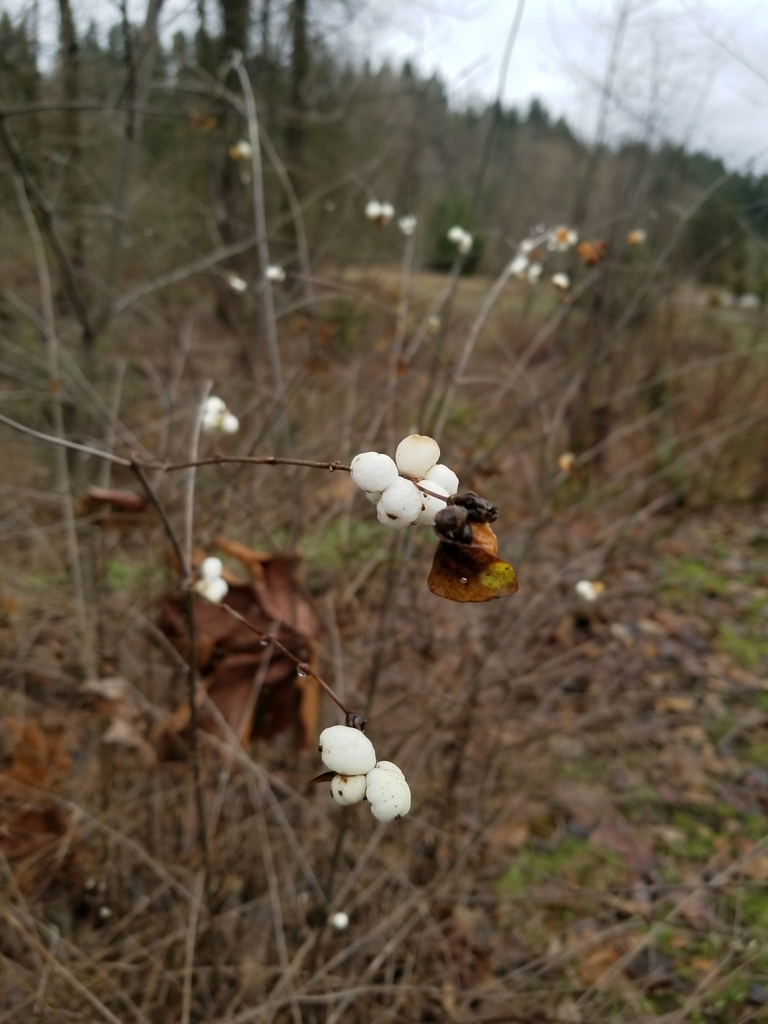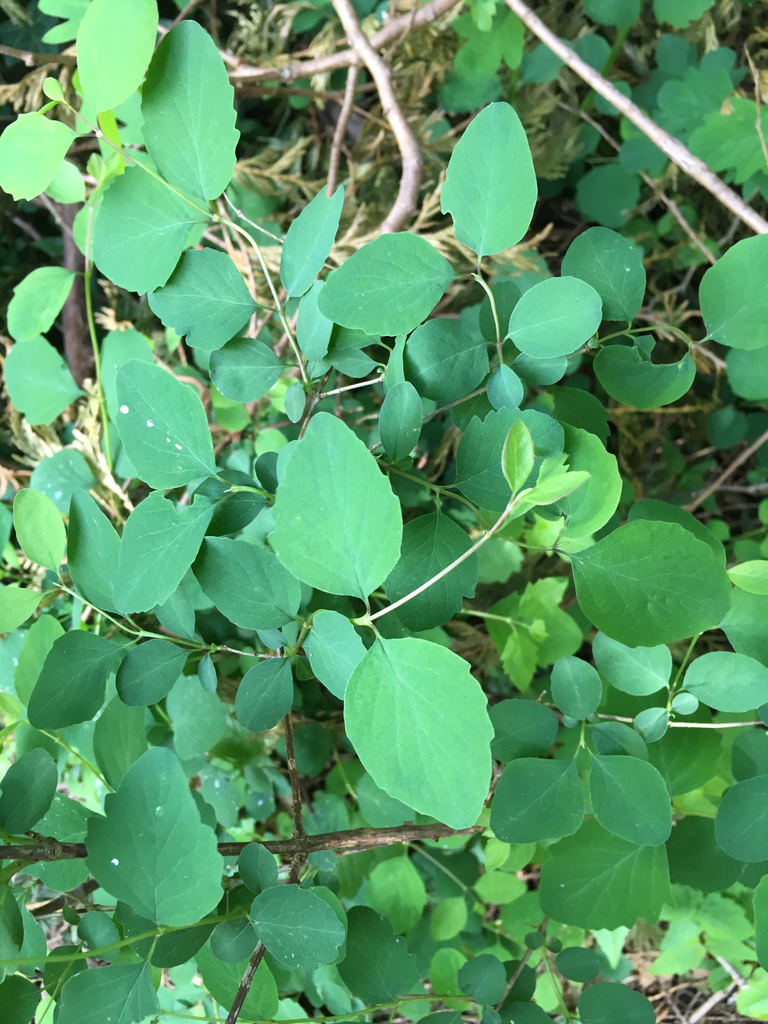Family: Caprifoliaceae
Common name: Common snowberry
E-flora BC: https://linnet.geog.ubc.ca/Atlas/Atlas.aspx?sciname=Symphoricarpos%20albus
Wikipedia: https://en.wikipedia.org/wiki/Symphoricarpos_albus
Common snowberry belongs to the family Caprifoliaceae, like its family members the honeysuckles, common snowberry is characterized by smooth round stems, oppositely arranged leaves, and clustered flowers and fruit .
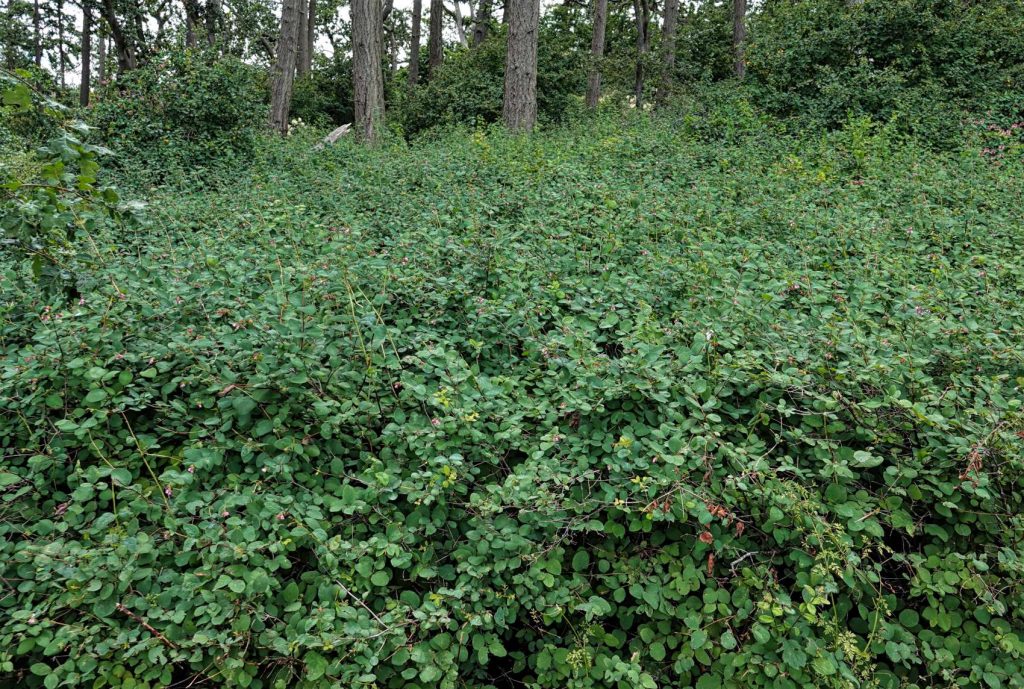
If we’re hasty, we might mistake snowberry for red huckleberry (Vaccinium parvifolium) – both have delicate foliage and thin stems. But look at the leaf arrangement, and inspect the stem closely: snowberry has opposite leaf arrangement and smooth, round stems; red huckleberry has alternate leaf arrangement and green, sharp-ridged stems.
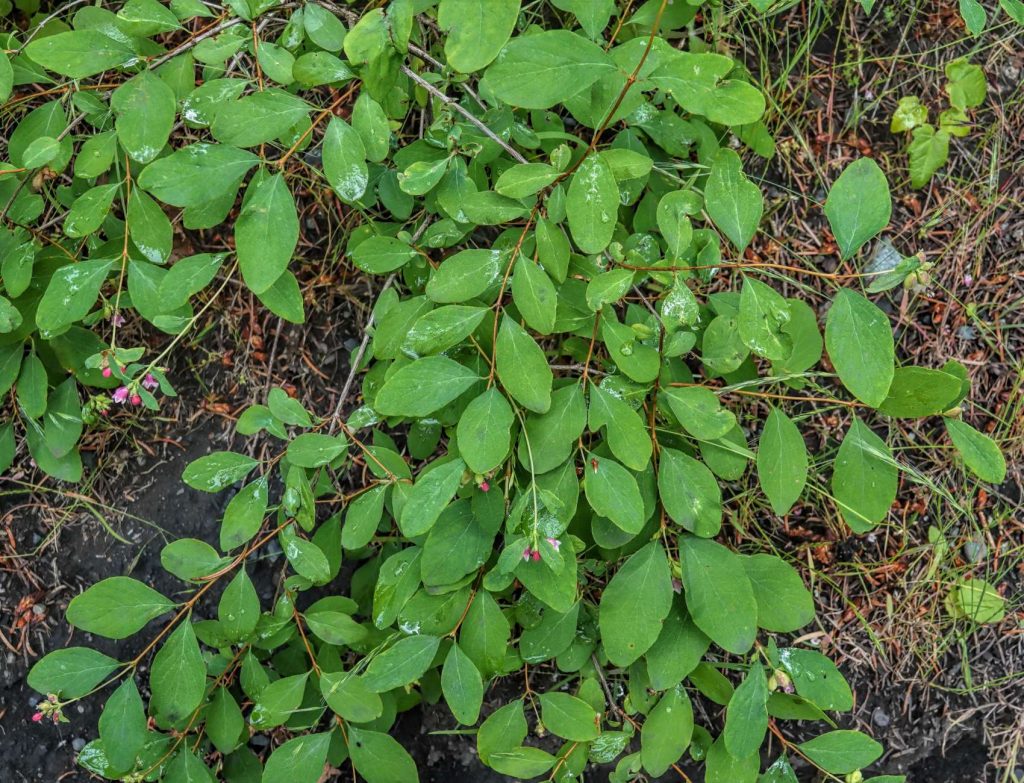
The flower and fruit arrangement of snowberry is similar to its close relatives, the honeysuckles (Lonicera sp.), they’re clustered at the ends of stems. The flowers of snowberry are important for native bees and hummingbirds, as they provide both nectar and pollen. The berries are eaten by e.g. towhees and robins.
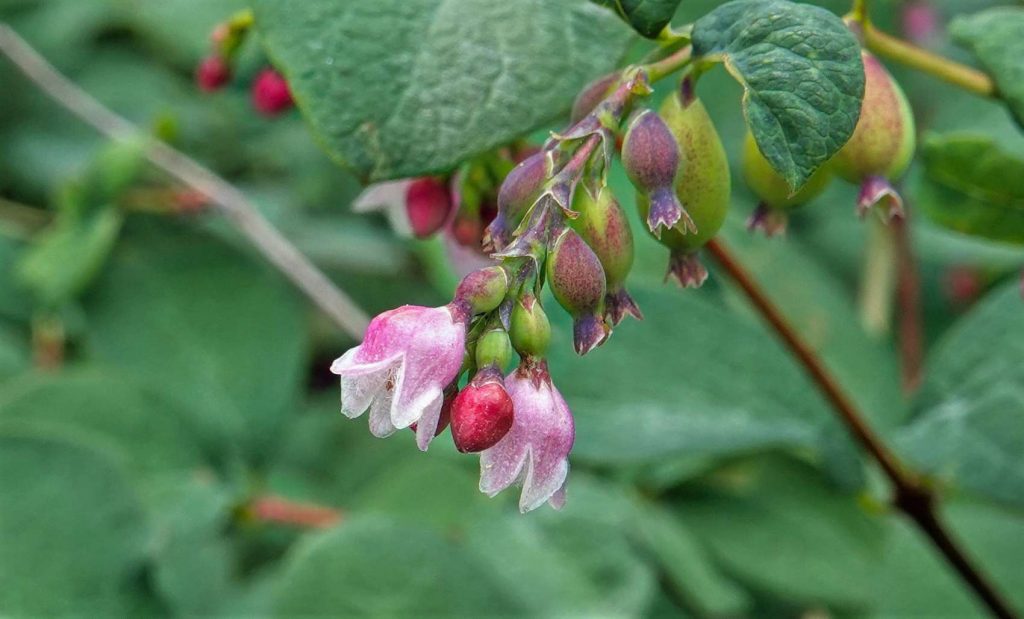
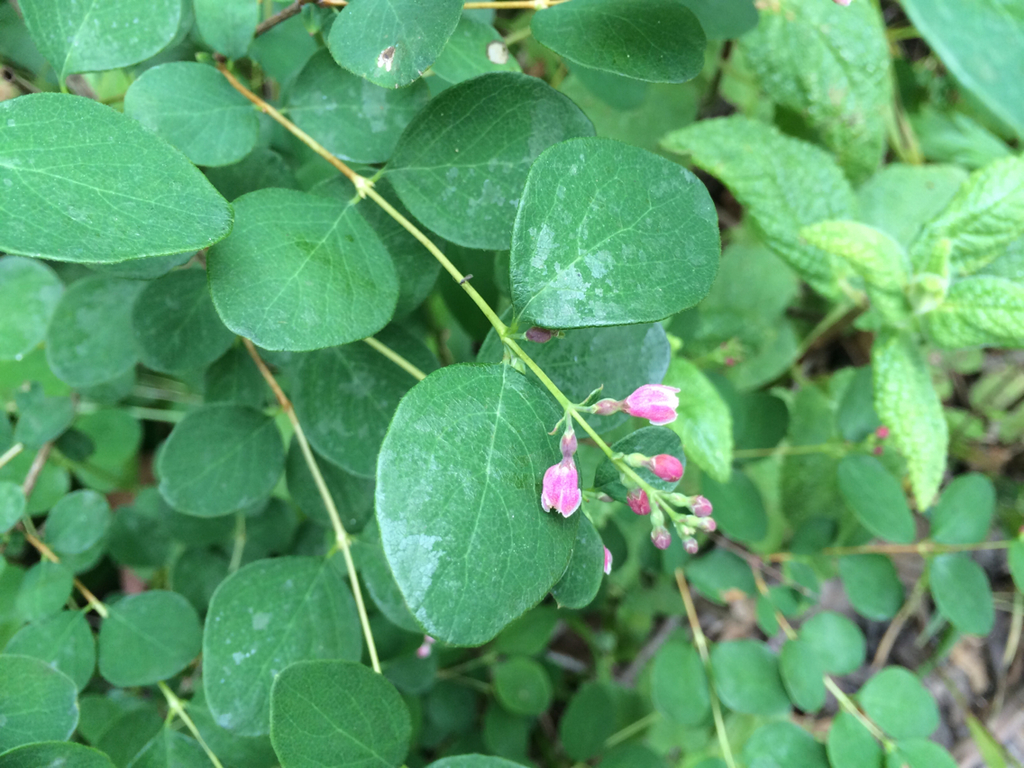
The scientific name Symphoricarpos albus is descriptive: sym = (Greek) together, phore = (Greek) bearer, carpos =(Greek) fruit, albus = (Latin) white, i.e. “white fruits borne together”. The berries are not used as a food source for humans, they are extremely bitter and probably a bit poisonous.
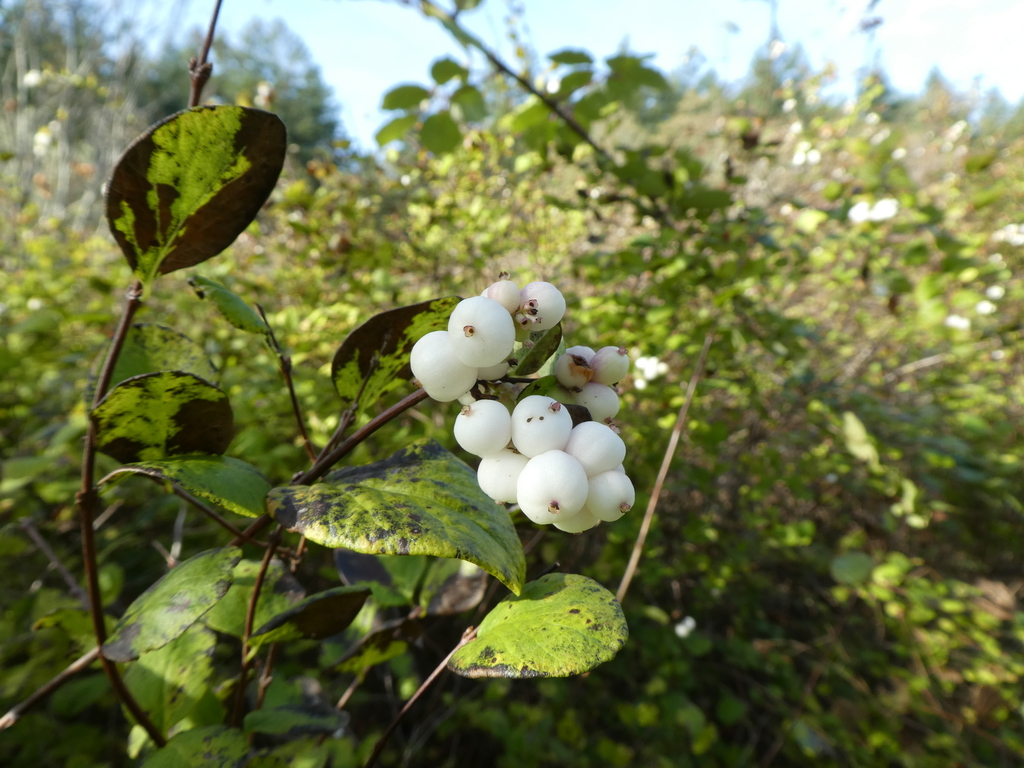
Photo credit: Ian Cruickshank via iNaturalist
The fruits of snowberry persist on the plant long into winter and brighten up the landscape. In late fall, after leaf-drop, a large thicket of fruit-bearing snowberry bushes look like a drift of snow. It’s a beautiful plant.
